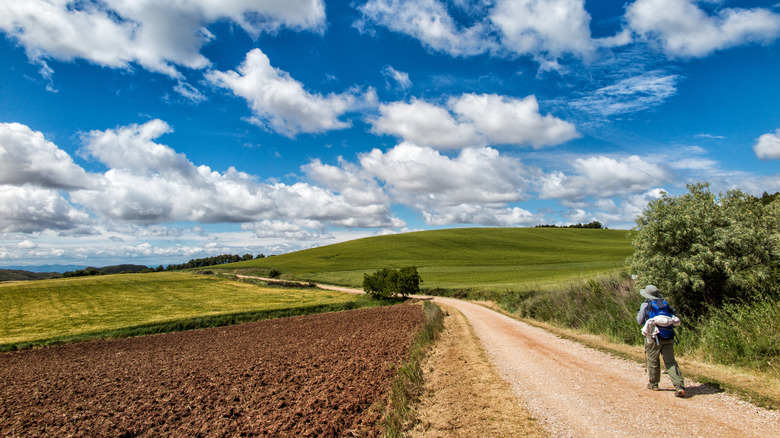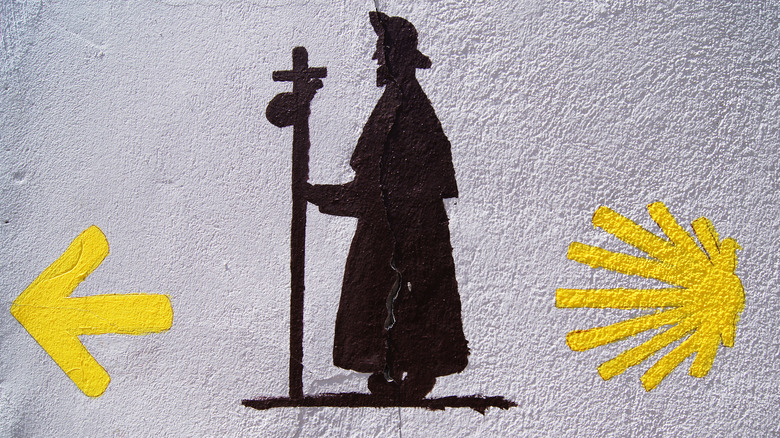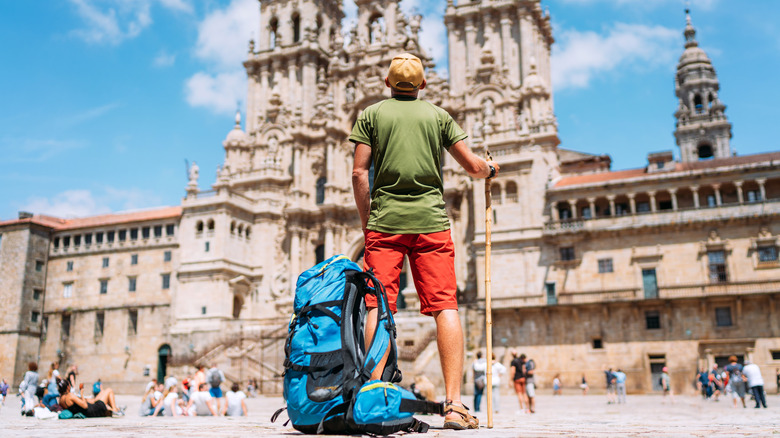Hike Through History On Europe's Scenic Equivalent To The Appalachian Trail
While North America has some terrific long-distance wilderness hikes such as the Pacific Crest and Appalachian Trails, Europe's Camino de Santiago is the king of the world's great walks. Known as the "Way of St. James" in English, this network of ancient paths winds across the Iberian Peninsula before converging in the town of Compostela in Spain's northwestern Galicia region. While it's a religious pilgrimage embraced by true believers, in the 20th century, the Camino also started attracted people seeking a taste of history and adventure, as well as those just wishing to challenge themselves.
Walking the Camino has made it onto the travel bucket list of many fans of outdoor adventures, but remember that this path is much more than a big hike. It's a time for reflection and contemplation, while also a chance to make new, lifelong friends as you experience something profound together, day in and day out.
The path dates back to the 9th century
The Camino de Santiago dates back to the 9th century, when a shepherd is said to have discovered the remains of the apostle James, one of Christ's original 12 disciples. A village and monastery grew up at the site of the tomb — named Compostela — which soon drew pilgrims from all throughout Europe. Most walked to Compostela from their front doors, following trade routes established by the Romans. These paths came to make up the Camino that we have today. The modern Camino is a spider's web of paths that all lead to St. James' tomb, though the Camino Francés is by far the most popular. Beginning in the medieval French town of Saint-Jean-Pied-de-Port before climbing over the Pyrenees into Spain, this nearly 500-mile walk takes at least 28 days to complete.
Other routes include the 513-mile Camino del Norte, which follows Spain's northern coast; the challenging Camino Primitivo, a rough, up-and-down 200-mile trek through the Cantabrian mountains and northern Asturias region; the relatively flat and easy 383-mile Camino Portugués, which takes you through Portugal; the Vía de la Plata, a 621-mile south-to-north route that begins in the historic city of Seville; and for those with not much time to spare, the Camino Inglés, a 75-mile walk from the port city of Ferrol that can be done in just six days.
Take on the trail at your own pace
In the age of air travel, you can choose to do as much or little of the Camino as you have the time or endurance for. The country is perfect for road trips, too, so you can always drive along some of the route and walk the rest. One key rule to earn the Compostela, though, is that pilgrims have to walk at least 62 miles from any starting point to be awarded the certification of completion at the Compostela Cathedral. This makes it a very flexible affair.
All pilgrims must carry a passport known as a credencial that can be purchased for just a few euros before setting off. This is used to collect stamps at various locations along the route as proof of distance covered. The passport is also the key to accessing albergues, the budget-friendly hostels reserved for pilgrims present throughout the Camino, as well as the discounted Menú del Peregrino (Pilgrim's Menu) available at many restaurants and bars.
While many choose to stay at the no-frills albergues, it's also possible to book high-end packages with luxury accommodations, gourmet meals, and baggage transport. There is no "right" way to do the Camino. Everyone walks their own path. The great equalizer is that all pilgrims are making their way to Compostela, one step at a time. If you're hiking the Camino on your own, check out our safety tips before embarking on your solo hike.


